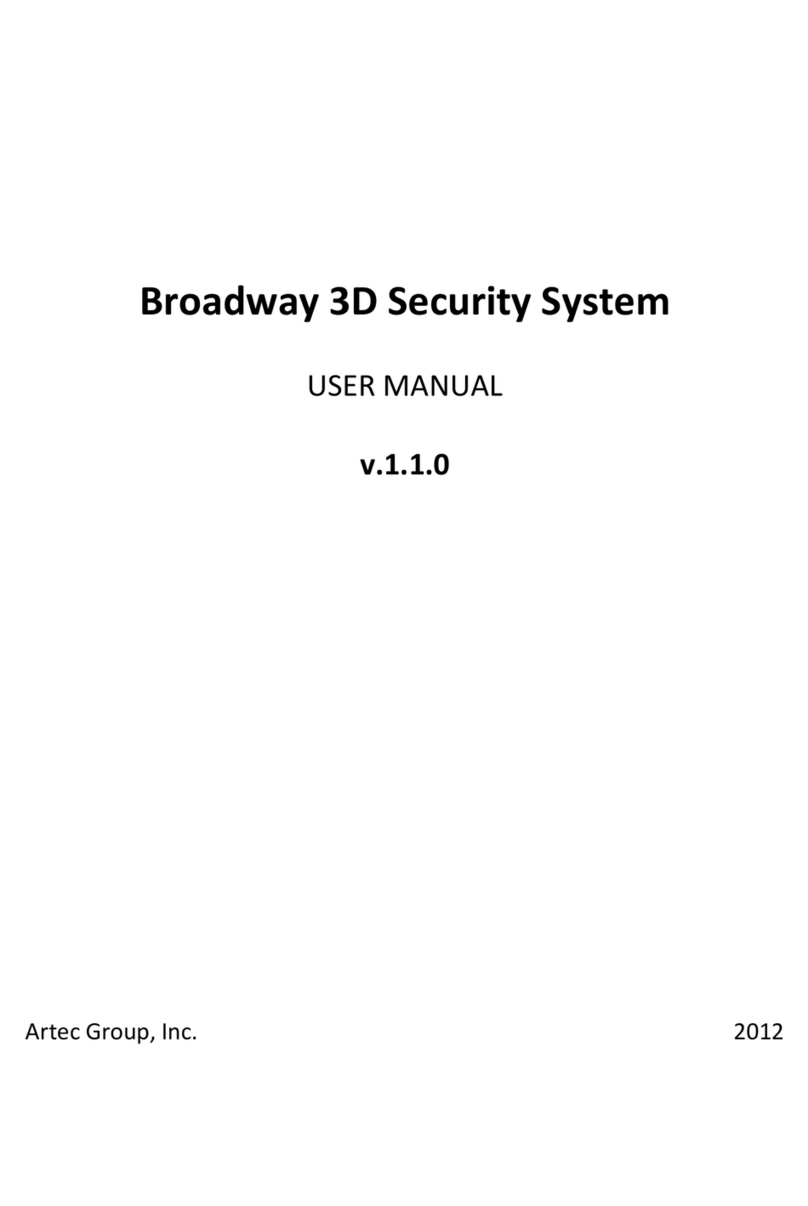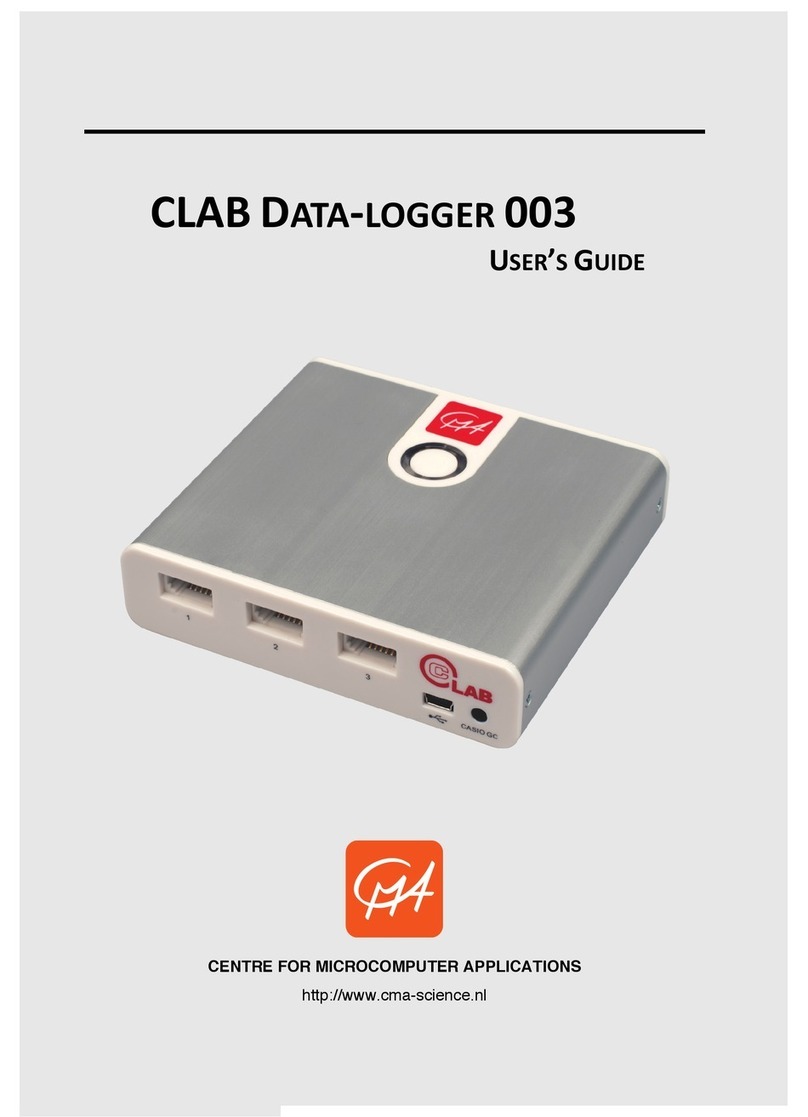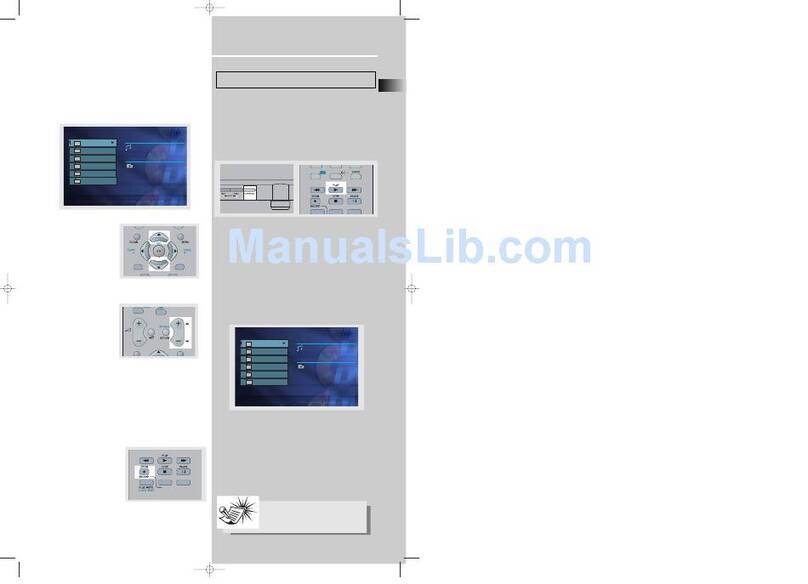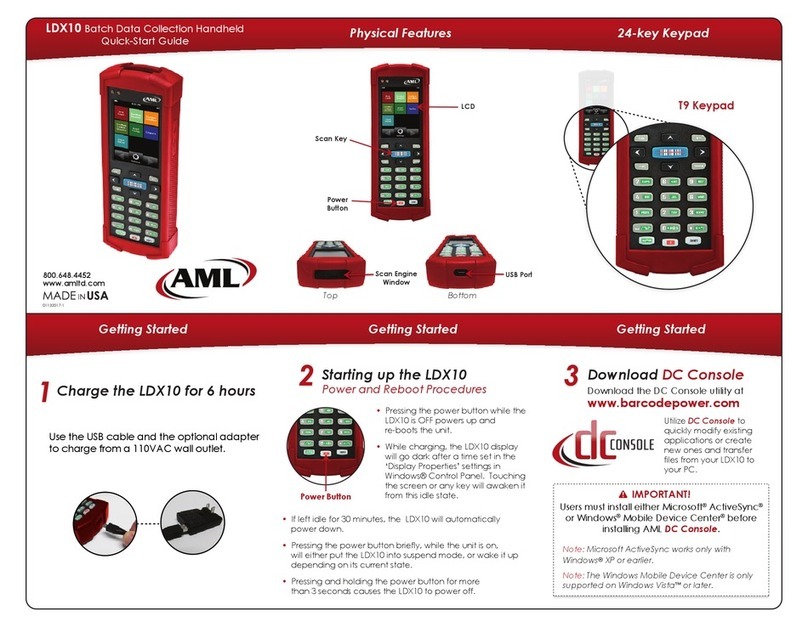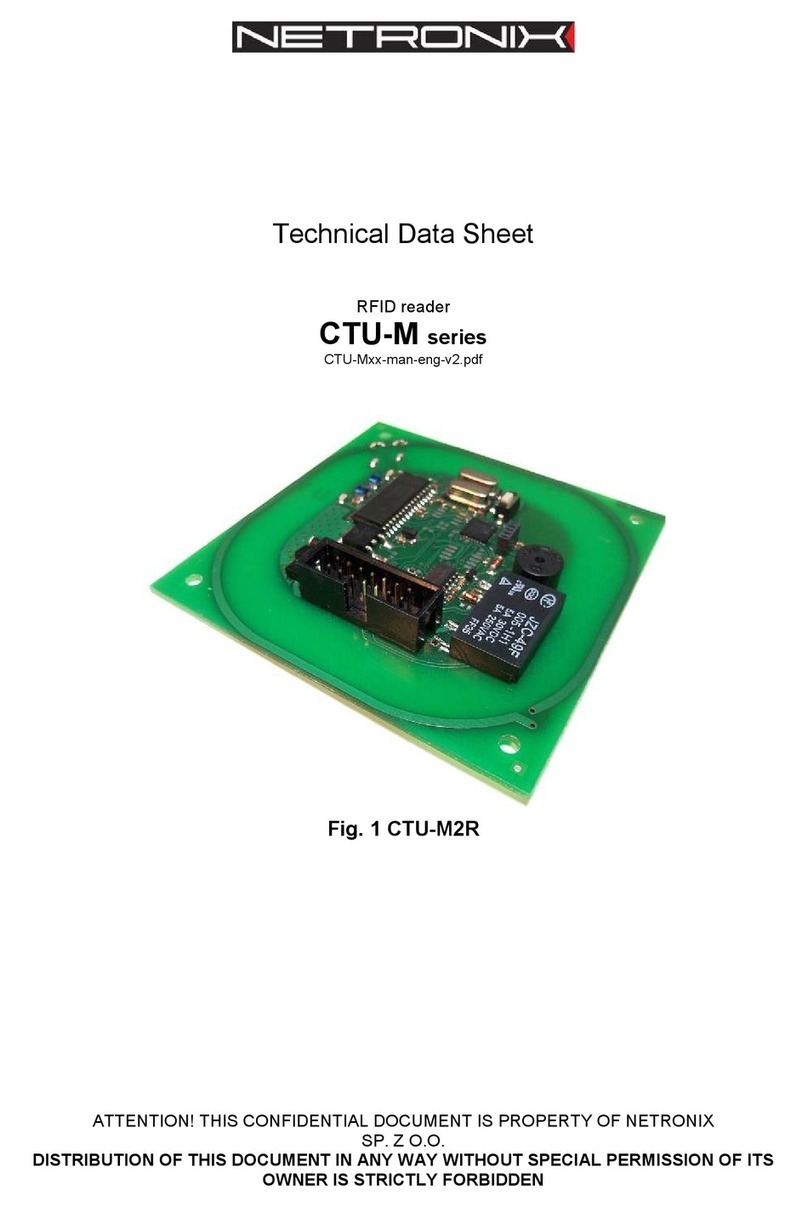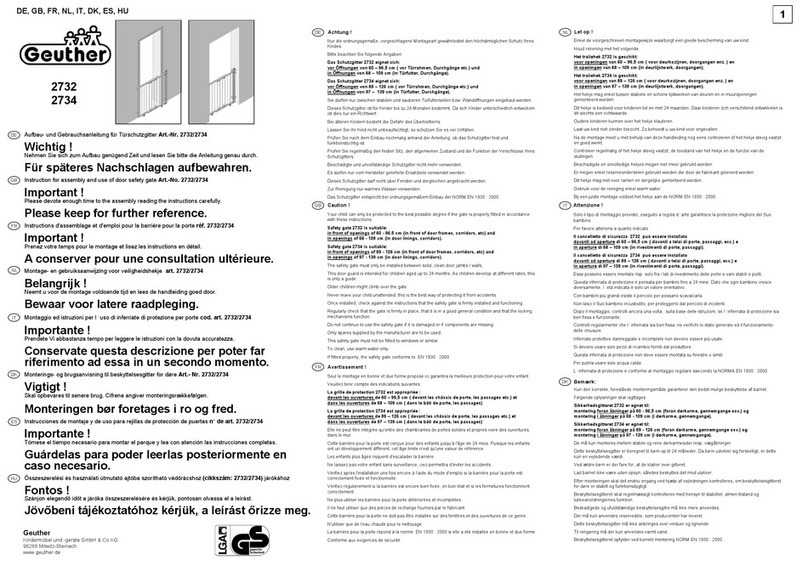Clear-Com ICS-21 User manual

SPEAKER STATION
INSTRUCTION MANUAL
ICS-21/21DT

Matrix Plus 3 System Instruction Manual
2000 Clear-Com Intercom Systems
All Rights Reserved
Part Number 810263 Rev. A
Clear-Com Intercom Systems
4065 Hollis Street
Emeryville, CA 94608-3505
U.S.A
Clear-Com is a registered trademark of Clear-Com Intercom Systems.
The Clear-Com Logo is a registered trademark of Clear-Com Intercom Systems.
Matrix Plus is a registered trademark of Clear-Com Intercom Systems.
IBM is a registered trademark of International Business Machines Corp.
MS-DOS is a registered trademark of Microsoft Corp.
Windows and Windows NT are registered trademarks of Microsoft Corp.

ICS-21/21DT SPEAKER STATION i
OPERATION 1-1
Description 1-1
Operation 1-1
Front Panel 1-1
Talk Button and Light 1-1
Answer-Back Facility 1-2
Intercom-Level Control 1-3
Program-Level Control 1-3
Integral Microphone 1-3
Tone Alerts 1-4
Remotely Controlled Operation 1-4
Internal Adjustments and Connections 1-6
Call-Alert Tone-Level Control (1) 1-6
Minimum-Volume Control (2) 1-6
Option Switches (3) 1-6
Remotely Controlled Operation (S1-2 and S1-3) 1-7
Matrix Connector (4) 1-7
Program-Input Connector(5) 1-7
Power Connection (6) 1-8
QUICK START 2-1
INSTALLATION 3-1
MAINTENANCE 4-1
Troubleshooting Tips 4-1
Technical Reference 4-3
Component Layouts/Bills of Materials/Schematics 4-4
ICS-21/21DT Main PCB 4-4
Matrix Option PCB 4-8
SPECIFICATIONS 5-1
CLEAR-COM LIMITED WARRANTY 6-1
Factory Service 6-1
Warranty Repair 6-1
Non-Warranty Repair 6-2
CONTENTS

ICS-21/21DT SPEAKER STATION

ICS-21/21DT SPEAKER STATION 1-1
OPERATION
DESCRIPTION
The Clear-Com ICS-21/21DT speaker station is designed for use in theatres, live
performances, industrial environments, and small television facilities. It features
excellent speech intelligibility, even in high noise levels, and can be customized
through its programmable options.
The talk button operates in momentary mode. The integral microphone and
speaker offer half-duplex communication. The ICS-21/21DT offers both visible
and audible call signaling to attract the attention of operators.
A balanced program input allows the monitoring of external audio through the
speaker. This program input can also be used as a paging function.
The integral speaker’s volume level can be adjusted using a front-panel knob. An
internal control allows setting a minimum speaker level. An automatic speaker
switching circuit will quiet the speaker when the talk button is activated.
The ICS-21/21DT is powered locally. In permanent wall installations, a 16-VAC
doorbell transformer will provide a convenient source of power. In DT-Box
installations, a 14- to 18-VAC wall-mounted transformer will suffice. The
connections to this transformer are made to the circuit board’s two-terminal,
plug-on connector. The unit mounts either in a standard four-gang electrical
outlet box or in an optional Clear-Com DT-Box. The extra-thick front panel and
compact, surface-mounted circuitry results in a reduced size and lighter weight
package that maintains Clear-Com ruggedness. The Matrix frame connects to an
eight-wire modular jack.
OPERATION
Normal operation of the ICS-21/21DT speaker station only requires access to
the front-panel controls. The controls located elsewhere on the unit are intended
to be set-and-forget in nature. For intercom operation, set the intercom-level
control to the desired level and press the talk button when talking.
FRONT PANEL
The controls, indicators, and connectors on the ICS-21/21DT front panel are
shown in Figure 1 on page 1-2 and are described in the text that follows.
Talk Button and Light
This momentary-action button activates the panel microphone so that audio is
transmitted to the answer-back label or the programmed station/interface talk
label. This light must be on for audio to be transmitted. It lights when the talk
button is held.
• The ICS-21/21DT offers
simple operation.
• Fully operational from the
front panel.
• Features include a talk
button, answer-back
facility, and program-level
control.
1

ICS-21/21DT SPEAKER STATION
1-2
Figure 1: Front Panel
Answer-Back Facility
The answer-back facility answers calls from stations or interfaces that the station
has not currently selected.
Call-Waiting Light
This dual-function light:
• is steadily lit when a call signal is received.
• flashes to indicate a call-waiting signal, which has priority over a call signal.
Answer-Back Button
This three-function button:
• sends a call signal to programmed label when the call-waiting light is off.
• directs audio to the longest-waiting call in the call-waiting stack when the
call-waiting light is flashing.
• ends the current conversation from the call-waiting stack when the
call-waiting light is steadily on.
Answer-Back Stack
The answer-back stack tracks incoming calls from any label that is not assigned
to the station. These calls are available in the order they were received. The
length of time the calls are available before they are automatically removed is set
in the configuration program.
Note: The label assigned to the station will never appear in the answer-back stack
and duplicate labels are never added.
ro
Intercom Level
Answer Back
Talk
Program Level
Mic
Call Waiting
• The answer-back facility
offers several features
including an answer-back
button, a call-waiting
light, and the ability to
answer subsequent calls
from unselected labels.
• The ICS-21/21DT
features intercom and
program-level controls.
• The internal microphone
provides hassle-free use.

ICS-21/21DT SPEAKER STATION 1-3
Answering a Call from the Answer-Back Stack
To answer a call from the answer-back stack:
1. Press and release the answer-back button to select the longest-waiting call.
2. Press the answer-back button while responding. The call-waiting light will be
on steadily.
Terminating Calls Answered with the Answer-Back Button
To terminate the call answered with the answer-back button, turn off the
call-waiting light, and recover the previous call:
• The receiving station can terminate the call by pressing and releasing the
answer-back button.
• The calling station can terminate the call.
Answering Another Call from the Answer-Back Stack
To answer another call from the answer-back stack:
• If the calling station disconnected the call, the call-waiting light will flash.
• If the receiving station disconnected the call, a call from another unselected
label will be activated when the answer-back button is released.
Sending a Call Signal
The answer-back button can send call signals to a station or interface currently
on the selected talk/listen path when the call-waiting light is not on. The light
will turn on when the button is pressed and turn off when it is released.
Receiving a Call Signal
The call-waiting light turns on when another station sends a call signal and
remains on during the call.
Intercom-Level Control
This control sets the speaker’s required listen level, but does not affect the
program-input level.
Program-Level Control
This control sets the program input’s audio level in the panel speaker.
Integral Microphone
This microphone is built into the front panel.
• The call-waiting light does
not light when a call is
received from a
programmed label.
•Note: The configuration
program can be set to
also send an audible
signal through the
speaker, which can only
be heard if the intercom
level is turned up.
•Note: Forcing the
trimpots past their stop
points will damage them.

ICS-21/21DT SPEAKER STATION
1-4
Tone Alerts
Tone alerts are set through the configuration program. The station has the
following three tones:
Table 1: Tone Alerts
REMOTELY CONTROLLED OPERATION
The ICS-21 can be programmed tobe remotely controlled. This feature can bea
benefit when the ICS-21 is used in a location where it is not possible for the
person speaking on it to control it. This feature can also be used to remotely
monitor locations.
Remotely controlled operation must be enabled both in the ICS-21 and in the
Matrix System. To set remotely controlled operation in the ICS-21, use the
following steps:
1. Remove power from the ICS-21.
2. Remove or partially remove the ICS-21 from its outlet box or enclosure.
3. Set Option Switches S1-2 and S1-3 to the ON position, towards the front
panel. Refer to Figure 2.
4. Fasten the ICS-21 into its box or enclosure and reconnect power.
To set remotely controlled operation for the ICS-21 in the Matrix System, use
the following steps in PGM-WIN program:
1. From the FILE menu, select ON-LINE TO MATRIX.
2. From the SETUP menu, select HARDWARE and LABELS. Assign labels to
the stations by clicking on the TALK LABEL for the port the station is
connected to and typing in the label you want the station to have. For this
example, the ICS-21 station will be named ICS21 and the master station will be
named 2003.
3. Select the ATTACHMENTS tab.
4. Click on the ROUTES button.
TONE MEANING
Four rapid beeps Call signal
Two beeps Label change
Single beep Monitoring
• You can remotely control
the ICS-21 speaker
station.
• Remotely controlled
operation must be set up
both in the ICS-21 and in
the Matrix System.

ICS-21/21DT SPEAKER STATION 1-5
5. Click on EDIT SOURCE-DESTINATION.
6. Highlight the ICS21 label. Click on route SOURCE.
7. Highlight the 2003 label. Click on route DESTINATION.
8. Click on END EDITS.
9. Select the ACTIVATE WITH LISTEN check box and the AVAILABLE
check box.
10. From the CONFIGURE menu, select ATTACHMENTS.
11. Click the STATION button and double-click ICS21.
12. Click on ROUTE 1. This will move the route from the left window to the
right.
13. Click the KEY ASSIGNMENTS tab.
14. Double-click the 2003 label and click on the desired Talk key. This will
place the ICS21 label on that key's talk and listen.
15. Click SELECT NEW and double-click ICS21. Select 2003 by highlighting
it and then click on the white box below TALK near the graphic of the station.
(LISTEN will automatically track.)
16. Select the LOCAL PEREFENCES tab.
17. Disable CALL SIGNAL TONES for ICS-21 label. (This is optional. It will
prevent the four call-signal beeps from sounding each time you set a talk to the
ICS-21 station.)
18. Select the GLOBAL ADVANCED tab.
19. Select the AUTO-SIGNAL check box for the ICS21 label.
20. Click APPLY.
• Control the ICS-21
speaker station remotely
when the operator needs
to be hands-free.

ICS-21/21DT SPEAKER STATION
1-6
INTERNAL ADJUSTMENTS AND CONNECTIONS
The controls and connectors inside the ICS-21/21DT are shown in Figure 2 on
page 1-6. They can be adjusted without completely removing the panel from its
wall box or DT-Box enclosure by removing the top two screws and loosening the
bottom two screws a few turns. The panel can then be tilted out from the wall to
make the controls accessible as shown in the lower view of Figure 2 on page 1-6.
Figure 2: Internal Controls
Call-Alert Tone-Level Control (1)
This control must be disabled by turning the control fully counterclockwise.
Minimum-Volume Control (2)
This control adjusts the minimum setting of the intercom-level control on the
front panel. This is normally adjusted when the system is set up and shouldn’t
need to be adjusted during normal operation. This feature can be disabled by
turning the control fully counterclockwise.
Option Switches (3)
Of the three option switches, only S1-1 should be configured when the system is
set up, and should not be changed in normal operation. The other two switches
(S1-2 and S1-3) should remain in the off position. The ON position of each
switch is toward the circuit board and the OFF position is toward the front
panel.
VIEW FROM TOP OF
ICS-21
FRONT PANEL
4
5
6
MINIMUM VOLUME CONTROL
CALL ALERT TONE LEVEL CONTROL
OPTION SWITCHES
MATRIX CONNECTOR
POWER CONNECTION PROGRAM INPUT
12
3
321
• The station’s internal
controls provide the
ability to customize the
ICS-21/21DT to
numerous applications.
• An RJ-45 provides audio
anddatacommunications
to the Matrix frame.

ICS-21/21DT SPEAKER STATION 1-7
Internal Microphone Gain (S1-1)
This switch determines the microphone’s sensitivity. When the switch is in the
ON position (default), talking should be done within 2 ft. of the front panel. If it
is necessary to talk from a greater distance, the switch should be turned OFF.
Remotely Controlled Operation (S1-2 and S1-3)
These switches set either normal or remotely controlled operation. When they
are in the OFF position, operation is normal and the talk/listen function is
controlled by the Talk button. When they are in the ON position, the talk/
listen function is remotely controlled by another Matrix station. Both switches
must be in either the ON or OFF position. The ICS-21 will not function if S1-2
and S1-3 are in different positions.
Matrix Connector (4)
This eight-wire modular jack (RJ-45) provides an audio and data
communications link to the Matrix system.
Program-Input Connector(5)
A three-terminal, plug-on connector provides the program input to the station.
Program is fed to the speaker. This level is controlled by the program-level
control. The program-input connector accepts a balanced or unbalanced
line-level audio signal from -20 dBv to +10 dBv. If this input is connected to the
stage announce (SA) output of a main station, it can be used as a paging input.
Because the level of this input is independently adjustable from the intercom
audio volume, it can be used to override the intercom audio in all modes except
remote listen-page. The program input is also independent of the mode setting.
The pinout of the program-input connector is as follows.
Table 2: Pinout Information
PIN NUMBER FUNCTION
1 Ground (shield)
2 Positive signal
3 Negative signal
23
1
ICS-21/21DT PROGRAM
INPUT CONNECTOR XLR CONNECTOR
PIN 1
• The minimum-volume
control assures that the
volume cannot be
completely turned off.
• The program-input
connector provides
program input to the
station.

ICS-21/21DT SPEAKER STATION
1-8
Figure 3: Program Input Connector Wiring
Power Connection (6)
The station requires local power, which can come from various sources,
including:
16-VAC Doorbell Transformer
A doorbell transformer can be attached to a separate box containing the
power-line connection and the low-voltage, 16-VAC can be routed to the
connector on the EB-4W circuit board. This connection is especially usefulif the
headset or speaker station is installed in a wall.
14-VAC Wall-Mounted Power Supply
A Clear-Com wall-mounted power supply (part number 400008)can be used for
powering the station from 120 VAC. (Use part number 400011 for 220 VAC
power.) This connection is a better choice if the headset or speaker is mounted in
a desktop box, such as a Clear-Com DT-Box, which is not located on a wall.
24- to 28-VDC Source
The headset or speaker station can be powered from a DC source, such as
batteries.
To connect the selected power supply:
1. Connect the two wires from the power source to the two-position, plug-on
terminal strip.
2. Plug this connector onto the circuit board as shown in Figure 2 on page 1-4.
• The station can obtain
power from three
sources.
•Note: Both 10-VAC and
16-VAC doorbell
transformers are
commonly available at
hardware stores, but only
the 16-VAC transformers
are suitable in this case.

ICS-21/21DT SPEAKER STATION 1-9

ICS-21/21DT SPEAKER STATION 2-1
QUICK START
1. Unpack the unit and inspect it for any damage that may have occurred during
shipping.
2. Set the option switches to the default (toward the front panel) position.
3. Connect the RJ-45 connector to the Matrix frame.
4. Connect 14- to 18-VAC power to the two-terminal, plug-on connector.
5. Install the ICS-21/21DT into the four-gang outlet box or DT-Box.
6. Set listen levels (see “Intercom-Level Control” on page 3).
7. The speaker station should now be operating properly.
8. Read the rest of this manual for further information.
• Users can use the “Quick
Start” approach to get
their stations up and
running in minutes.
•Note: When the station
is initially powered, the
call-waiting lamp will
blink slowly indicating the
station is attempting to
communicate with the
Matrix frame. Once
communication is
established, the blinking
will stop.
2

ICS-21/21DT SPEAKER STATION
•

ICS-21/21DT SPEAKER STATION

ICS-21/21DT SPEAKER STATION 3-1
INSTALLATION
1. Connect the 14- to 18-VAC power to the two-position terminal strip. Plug the
terminal strip onto the P2 as show in Figure 2 on page 1-6.
2. Connect the eight-wire, modular RJ-45 connector to J1 as shown in Figure 2
on page 1-6.
3. If the RJ-45 Matrix connector should need to be unplugged, use the following
procedure.
1. Remove power from the station.
2. If the station is installed in a DT-Box, remove the front panel. It is
retained with four screws.
3. Using long-nosed pliers, grasp the top and bottom of the plug so that the
retaining clip will be depressed. Pull the plug out with the pliers.
Figure 4: DT-Box Wiring
• The ICS-21/21DT runs
on 14- to 18-VAC power.
•Note: If the station is to
be installed in a DT-Box,
the back cover of the DT-
Box must first be
removed. It is retained
withfourscrews.Feedthe
power cable through one
slot and fasten it to the
strain relief as shown in
Figure 4 at right.
• Removing the RJ-45
Matrixconnectorrequires
three steps.
3

ICS-21/21DT SPEAKER STATION

ICS-21/21DT SPEAKER STATION 4-1
MAINTENANCE
TROUBLESHOOTING TIPS
Listed below are some of the more common problems the station may
experience, their possible causes, and suggested solutions.
SYMPTOM CAUSE SOLUTION
System does not operate
and the talk light does
not turn on when talk
button is pressed.
The station is not
receiving 14- to
16-VAC power.
Check the circuit
powering the station
and make sure all plug
connections are secure.
System does not operate
and the talk light does
not turn on when talk
button is pressed.
The station has an has
an internal failure. The station requires
servicing.
System does not operate
and the call-waiting
light blinks slowly.
Communication with
the system is lost. Make sure each
eight-wire, modular
connector is securely
plugged in, check the
wiring, and ensure that
the Matrix system is
turned on.
System does not operate
and the call-waiting
light blinks quickly.
1. S1-2 and/or S1-3 are
not off.
2. An incompatibility
problem with the
Matrix system.
1. Turn S1-2 and/or S1
off, then remove and
restore power to the
station.
2. Contact the dealer or
Clear-Com’s technical
service.
System operates
incorrectly. The talk
light does not come on
when talk button is
pressed or stays on until
talk button is pressed.
The speaker is off when
it should be on.
Operating mode
switches are set
incorrectly.
Refer to the section of
this manual on option
switches (page 1-5).
• Sometimes when the talk
light doesn’t work it’s
because the station isn’t
receiving power.
• When the system doesn’t
operate, make sure there
isn’t an incompatibility
problem.
4

ICS-21/21DT SPEAKER STATION
4-2
Speaker does not
operate, but the talk
light comes on when
talk button is pressed.
1.The intercom-level
knob is turned all the
way down.
2.The speaker plug or
wiring has come loose.
1. Adjust control
appropriately.
2. Make sure speaker is
connected internally.
Hum or buzz in system. Inductivepickupcaused
by close proximity of
this speaker station or
connected stations to
power lines or
transformers.
Relocate the offending
unit or wiring.
System feedback
(acoustical). The intercom-level
control at this station or
anotherstationissettoo
high.
Adjust.
System feedback
(acoustical). Channel unterminated. Set the main station or
power supply
termination switch for
the appropriate channel
to the ON position.
System feedback
(acoustical). The station’s
microphone is too close
to an open speaker on
another station.
Turn down the speaker
or change the unit’s
location.
Program signal sounds
distorted. The program-level
control is set too high. Turn the
program-level control
counterclockwise.
Program signal sounds
distorted. The program input
circuit is overloaded. Reduce the gain of the
program signal at the
source, such as an audio
mixer.
Rapid clicking noise. 1. Defective wiring or
connectors.
2. Defective IC1 on
710533 assembly.
1. Repair/replace wiring
or connectors.
2. Replace IC1.
SYMPTOM CAUSE SOLUTION
• System feedback can
have three different
causes.
• When the program signal
is distorted, check
whether the program
input is getting too much
signal.
This manual suits for next models
1
Table of contents

